| SECTIONS Introduction
The Early Years in the United Kingdom
Schools
Choosing a Career
Astronomical Society of Haringey
Fred Clarke, Sir Arthur C.
Clarke and Patrick Moore
Payload Specialist
Bournemouth
Arriving in the United States
First Venture into Astrophysics
Honors
Crisis
Belief in ETIs
First OSETI Activities
Optical SETI Rationale
OSETI Conferences
Vindication
Twenty Five Years of Neglect
Townes versus Oliver
Update
Conclusions
Other Related Materials:
Introduction
With the advent over the past summer of the SETI
Institute and The Planetary Society publicly accepting that
the optical approach to SETI was a viable one, the time has come for an account of how my
revisit of Optical SETI encouraged the SETI community to rethink its earlier negative
opinions about the laser approach. The arguments for and against the optical
approach to SETI mainly boils down to whether one believes that advanced technical ETI
civilizations would have the knowledge base and technical prowess to accurately
point-ahead target very narrow high-gain laser beams in our direction. It is also
believed that since interstellar dispersion and scintillation effects badly corrupt radio
frequency communications, only lasers have the ability to propagate across interstellar
space, free of significant distortion, and thus be capable of supporting wideband
communications. In the visible spectrum it is possible to propagate a laser beam
over several thousand light years without significant interstellar absorption and
scattering, even in the galactic plane. Other than the 10,600 nm CO2
(Carbon Dioxide) laser wavelength first identified by Nobel Laureate, Charles Townes in
1961, it is difficult to decide if there are many so-called "magic optical
wavelengths". Also, it is by no means clear that ETIs would choose a laser
transition for which our atmosphere is essentially transparent. It may required
space-based observatories for success in this venture (see comments at end of article).
You will get to hear how Monte Ross originated the idea,
as early as 1965, that short laser pulses would be more effective than monochromatic
continuous wave beacons signals and that this would eliminate the need to
"guess" the magic optical wavelength -- one would only need to be in the correct
wavelength regime for which our telescopes and optical receivers are optimized.
Monte Ross published his thoughts on these matter only four years after Schwartz and Townes (1961) first proposed Optical SETI with
monochromatic continuous wave lasers, which itself was one year after the laser was
invented by Maiman (1960) and two years after the classic paper
by Cocconi and Morrison (1959) that first proposed Microwave
SETI. Frank Drake's Project Ozma (1960) marked the first Microwave SETI
observational work. The one and only time I have met Frank
Drake was on the occasion of the 1993 Santa Cruz
Bioastronomy Meeting. I made a comment to him that perhaps he should have become
an optical astronomer, as he had originally planned. His response was to query why
anyone would want to do Optical SETI in cloud-covered Ohio - that perhaps I should move
out to Santa Cruz!
The Early Years in the
United Kingdom
But first, let me describe the circumstances by which I got into this field - an
accident if there ever was one. Have you ever wondered how a person distinguished or
somewhat distinguished in one particular scientific field changes his or her field?
Was it due to some mid-life crises? All will now be revealed. In the process
of hope to encourage others who too may go through a crises or trauma, that they too can
pick themselves up, dust themselves down and resume their careers. It all started in
London, England in October 1957, when I was nine years old. . . .
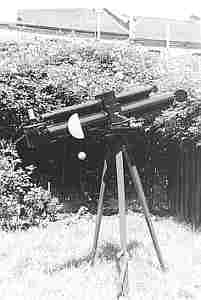
Small beginnings. Stuart's cardboard-tube refractor in the
summer of 1964 mounted on a government-surplus tripod. Picture taken in the back
garden of our South Tottenham home.
|
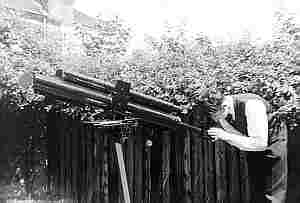
Stuart's cardboard-tube refractor in the summer of 1964. That's
me in the picture at age 16 . Note the plumbline for obtaining the elevation.
|

My mother's South Tottenham home where I lived from May 1957 till
June 11, 1981. Picture taken on June 21, 2000.
|
Schools
Choosing a Career
Astronomical Society of
Haringey
Fred Clarke,
Sir Arthur C. Clarke and Patrick Moore
Payload Specialist
Bournemouth

View along the beach between Boscombe and Bournemouth. Photo
shows the Bournemouth pier and the BIC Centre (to the right) where the Conservative
Party often holds its annual conference. See also Bournemouth
& Boscombe
|
Arriving in the United
States
First Venture into Astrophysics
Honors
Crisis
Belief in ETIs
First OSETI Activities
Optical SETI Rationale
Figure 1 shows the acquisition signal (Signpost SETI). Generally, SETI has been
about looking in the microwave regime for an attention-getting beacon signal. While
some SETI researchers accept that this beacon might point the way to the main signal
channel elsewhere in the electromagnetic spectrum, others believe that both the beacon and
wideband data channel will be found in the microwave spectrum. I see no compelling
reason why the main wideband signal and beacon cannot both be at the same frequency in the
optical spectrum.
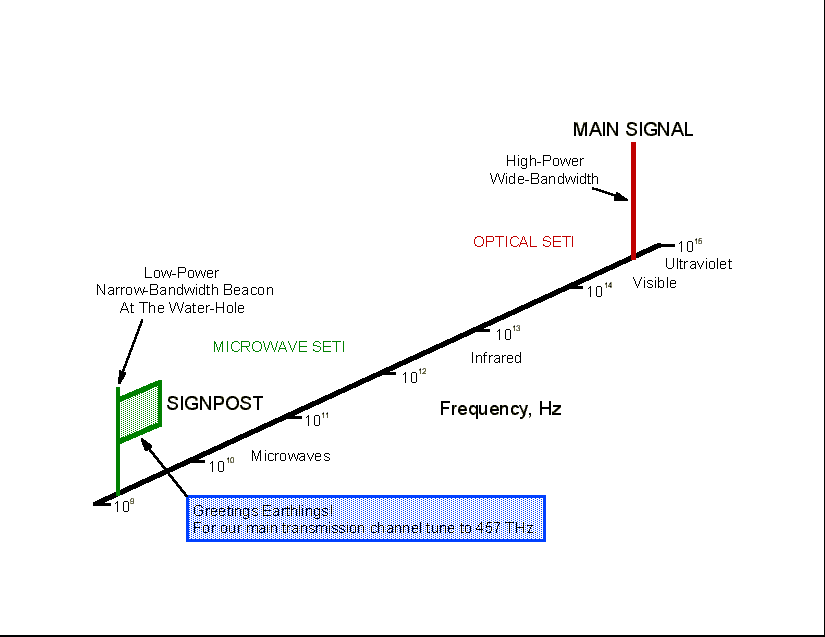
Figure 1. Reproduced from Los Angeles SPIE's OSETI I Conference,
January 1993. Click on the diagram to be taken to the paper.
It was the Soviet astronomers, Shvartsman and Beskin, that
took up the search for laser pulses during the 70's and 80's. In the United States,
the Cyclops Report, published by NASA in 1972/73, very much put
the nails into the OSETI coffin in the western world and the Cyclops Report essentially
but not completely, marked the end of interest in the optical approach here in the states.
That said, I do not want to belittle the heroic efforts by Carl Sagan, Frank Drake,
John Billingham, Barney Oliver, and Jill Tarter and many others in keeping the SETI flame
alight despite criticism from politicians and others. Indeed, I myself have
witnessed the mirth (the giggle factor) caused by mentioning Optical SETI in the
associated Free-Space Laser Communications Meetings held by SPIE. I appreciate that
it can't have been easy for the SETI pioneers. Today, we stand on the threshold of a
new era for SETI and optical astronomy, where it will become possible for large numbers of
professional and amateur optical astronomers to participate in this exciting adventure --
where old medium-size and large telescopes decommissioned from serious scientific studies
because of light pollution effects can be brought out of retirement. It may also be
possible to undertake SERENDIP Optical SETI and piggy-back OSETI research while
undertaking conventional optical astronomy. Furthermore, in time a symbiotic
relationship may arise between optical astronomy and optical SETI. Some of the great
telescopes of the world could be commissioned to undertake optical SET research, perhaps
conducting it during daylight hours when the telescope is not being used for other
purposes. One thing the OSETI rationale tells us that it is quite possible to do
Optical SETI during the day under a clear blue sky. It tends to blow people's minds
when you say that, but the numbers do indicate that this should be possible.
Figure 2 shows a basic Amateur Optical SETI Observatory. Only a single
photodetector is used, which can be a photomultiplier tube (PMT), an avalanche
photodiode (APD) or a CCD array. The new associated e-commerce site will be selling
a fiber optic spectrometer for undertaking this type of monochromatic Optical SETI.
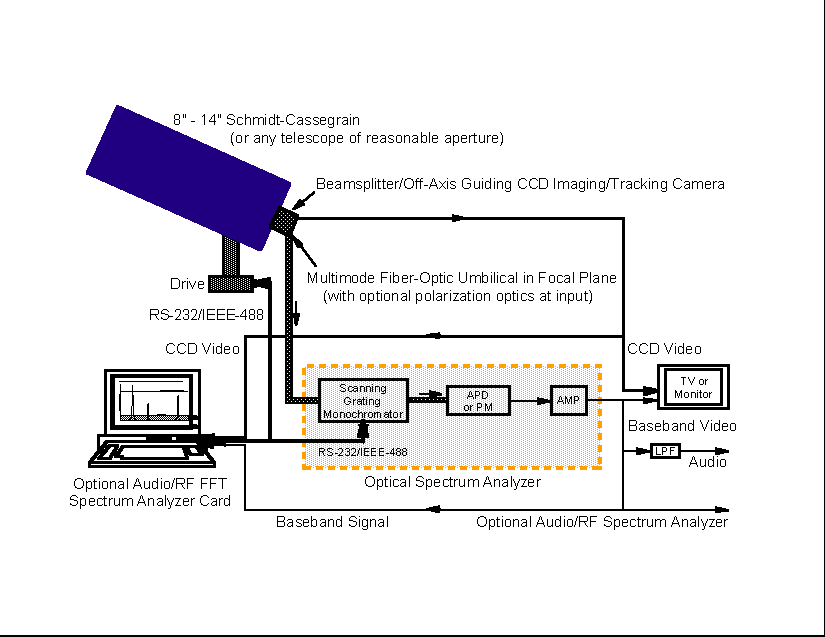
Figure 2. Reproduced from Los Angeles SPIE's OSETI I Conference,
January 1993. Click on the diagram to be taken to the paper.
Figure 3 is a picture of the COSETI Observatory's computerized 10" (25.4 cm) Meade
LX200 in the days before an astronomical dome was built to house the telescope and other
equipment.
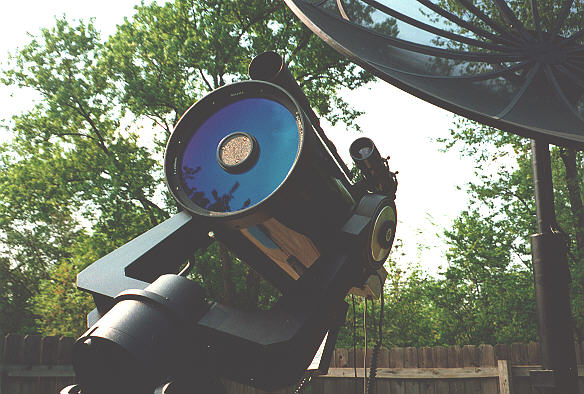
Figure 3. Reproduced from Los Angeles SPIE's OSETI I Conference,
January 1993. Click on the diagram to be taken to the paper.
In 1993, I predicated that by the year 2001, the then NASA SETI High Resolution
Microwave Survey (HRMS) would undergo a change and become the High Resolution Microwave
& Optical Survey (HRMOS). This would happen if only because of the expected
frustration that would occur as the microwave search continued to produce negative
results. However, in October 1993, just one year after the start of this major NASA
SETI program, the project was killed by Congress. The Targeted Search part of the
program later was reborn under the new privatized name "Project Phoenix".
Nevertheless, we are on track for the successor to Project Phoenix to take on a decided
optical slant by the year that Sir Arthur C. Clarke thought we would make
"Contact" and the next scheduled International Conference
on Optical SETI. Figure 4 shows just some of the major milestones for both types
of SETI since 1959. Underpinning this large base of Microwave SETI knowledge are the
original assumptions about the Effective Isotropic Radiated Power (EIRP) capabilities of
ETIs.
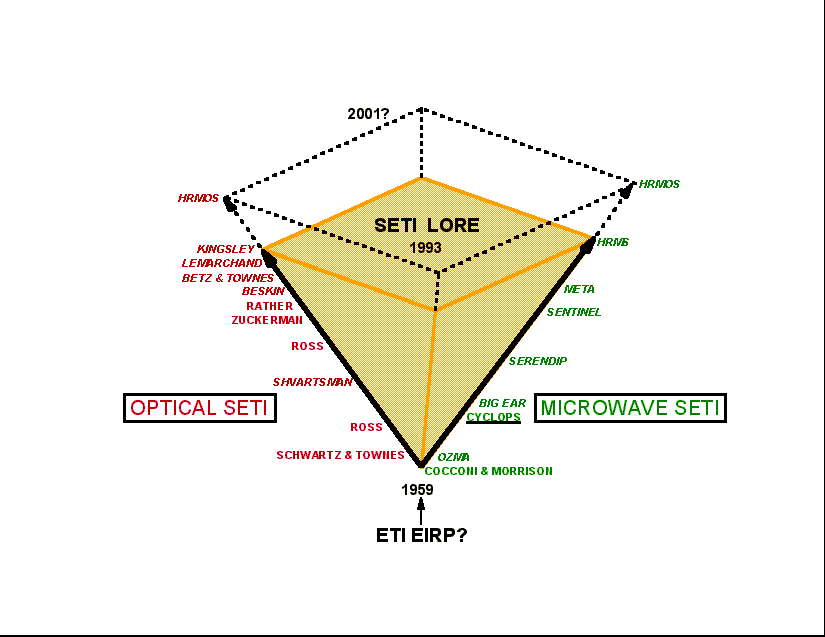
Figure 4. Reproduced from the Santa Cruz Bioastronomy Meeting,
August 1993. Click on the diagram to be taken to the paper.
Throughout all the years of marketing OSETI to the world, there has been one steadfast
VIP supporter. He goes by the name Sir Arthur C. Clarke
with whom I have a connection stretching back to the early 70's and the Astronomical
Society of Haringey (ASH) in Wood Green, London, England. Arthur once referred to me
in a London Times Education Review as a "Maverick Englishman".
I wear that badge with honor, though these days I am also a "Maverick
American"! Here in the states, one of my earliest converts to OSETI was
Professor John Kraus, the former Director of the OSU's "Big Ear"
Radiotelescope and the author of perhaps the most well-known standard texts on antennas;
books that have been used by generations of students. My connection to "Big
Ear" is as a so-called volunteer with Bob Dixon's OSU
SETI Group, which is why my main email address is associated with The Ohio State
University. I have no other affiliation with the university. This is somewhat
of a perverse connection because my main contribution to Bob Dixon's Group these past
eight and a half years has been to claim that "they are tuned to the wrong
frequency"!
This up-coming article will give an account of how I became actively involved in
Optical SETI after a very traumatic period in my life, my background and the battles with
the SETI establishment over their strong opposition to the approach. It is because
of my background that I had the confidence to do this despite so much negativism from the
"big names" in the SETI community. See my correspondence with the late Dr. Barney Oliver (former Deputy Chief of the NASA SETI Office and
the official voice of SETI) and The Planetary Society. If
you click on the RealAudio link at the foot of this page you can hear in his own words
Barney's reasons for believing that it was not possible to exploit the high gain potential
of laser uplinks, thus making lasers inferior for SETI-type interstellar communication
links. This presentation is taken from SPIE's First
International Conference on Optical SETI. Figure 5 seeks to compare the ETI
EIRPs predicted by various SETI researchers. You will note that I am very optimistic
about the technical capabilities of these advanced ETI civilizations.
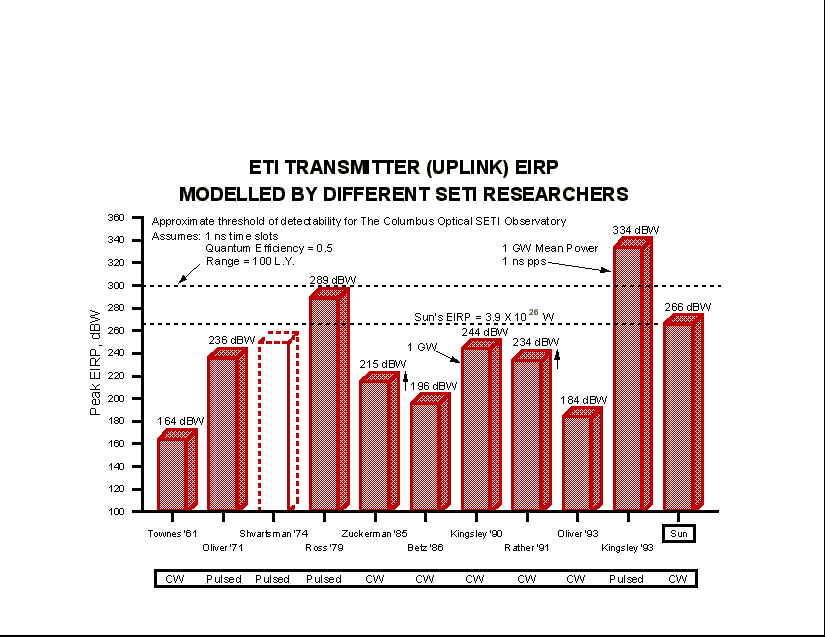
Figure 5. Reproduced from Santa Cruz Bioastronomy Meeting, August
1993. Click on the graph to be taken to the paper.
There was definitely a feeling of deja vu in that when I began my postgraduate
photonics career, I was told by a captain of the British fiber optics industry that I was
"wasting my time". Twelve years later I received Britain's highest photonics accolade for my Ph.D. work. Not bad, if I
say so myself, for an 11+ failure (the Brits will understand the reference). And so
much for expert opinion! Even so, for this writer, his own OSETI activities are
bounded somewhat by the hope that the entire idea of Electromagnetic SETI is misguided,
and that in time, we will discover means to travel across interstellar space at enormous
effective speeds, so that visits to other star systems will be possible in a human
lifetime. The Kingsley Paradox is "Why communicate when you can travel?".
The idea of Optical SETI had probably been at the back of my mind for a decade or more
prior to the start of actively researching the approach in the summer of 1990. At
that time, I was completely unaware that OSETI had not only been proposed by other
scientists, but that limited observational work had and was being conducted. Such
was the lack of attention given to Optical SETI in the popular media over the past quarter
of a century.
Figure 6 shows Monte Ross's idea which I modified to show how a digital pulsed stream
of data could be combined with an attention-getting beacon pulse.

Figure 6. Reproduced from the Jerusalem 45th International
Astronautical Congress, October 1994. Click on the diagram to be taken to the paper.
The account will describe my general philosophy in revisiting, promoting and investing
my own resources in Optical SETI and how that approach changed as the Internet
developed. What started with a small WildCat Bulletin Board System (BBS) in late
1991 and obviously somewhat restricted to local traffic, eventually matured into a
significant Web site with planet-wide access. The Internet has provided the very
powerful and effective means to get these ideas across and bypass the "usual"
channels, including the peer-review system. Indeed, because it was decided early on
that it was better to inspire and "teach" the technique to others so that many
more observatories, both professional and amateur can be brought online sooner, my own
observational activities have taken somewhat of a back seat. I could have undertaken
this work quietly, but chose the more public approach, including the arrangement of two international conferences and a third in the planning stage,
under the realization that any type of SETI research is likely to require many man-years
of effort before we would be successful in detecting an ETI signal. Patience is the
watchword in this game. However, 1999 has just seen the addition of a linked
e-commerce Web site that will allow other professional and amateur OSETI observatories to
obtained some of the materials required to equip their observatories.
Figure 7 shows a photograph of the 10 ft. diameter fiber-glass PRO-DOME 10 (Technical
Innovations, Inc.) which now houses the LX200 SCT. At that time the dome stood 6 ft.
high. The following year an additional 1 ft high wall-ring was added to raise its
height to 7 ft., just one or two inches clearance remains beneath the satellite dish when
pointing due south. This is shown in the photograph of Figure 9. The satellite
dish is mainly for receiving "alien" transmissions from the BBC in London, it
has nothing to do with the SETI activities of the observatory.

Figure 7. Reproduced from the Jerusalem 45th International
Astronautical Congress, October 1994. Click on the diagram to be taken to the paper.

Figure 8. The COSETI sign on the backyard fence.

Figure 9. The astronomical dome in the summer of 1995 with the
extra wall-ring.
The article will also include a brief history of Optical SETI on planet Earth and
explain why it is that many of the general popular media accounts of SETI over the past
quarter of a century have failed to even mention that there was a viable optical approach
to this scientific endeavor. This account will also, for the record, put right
misleading statements issued in recent press releases that would suggest a touch of
"revisionist history". Nothing really has prevented the
main-stream SETI researchers from having a more balanced approach to Electromagnetic
SETI these past 38 years. Its is certainly not for lack of terrestrial technology,
despite what has recently been claimed. Frankly, too much time had been spent around
the 1.42 GHz so-called "Waterhole" to the exclusion of the major part of the
electromagnetic spectrum. It is time to get out of the water! Figure 10
indicates the number of photons that can be detected by both large and small telescopes as
a function of range assuming a pulse ETI laser beacon system producing a mean optical
transmitter power of 1 GW in the form of a single pulse of 1 ns duration transmitted once
every second. Such a pulse is instantaneously about 10 million times the intensity
of our sun. Thus, there would be no problem in detecting such a signal with a small
telescope in the full glare of the ETI's star, though it wouldn't be visible to the naked
eye.
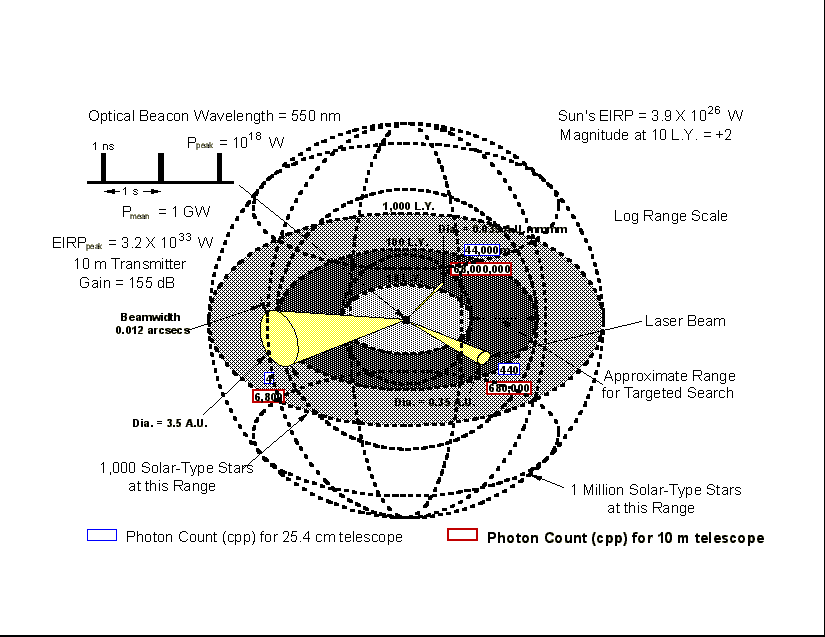
Figure 10. Reproduced from San Jose's SPIE's OSETI II Conference,
February 1996. Click on the diagram to be taken to the paper.
Larry Klaes is the author of the "Contact" film
review and "So you want to get into SETI".
These articles may be found on this and many other Web sites. He will be the
principal author of this historical account. Larry is the Coordinator for The COSETI Observatory and has been closely involved with
my OSETI activities since 1991, after a "chance encounter" on the Internet as a
result of my OSETI postings to various space, astronomy and astronautical newsgroups.
Another chance encounter on the Internet was with Carl Helmers of Helmers Publishing, Inc. This eventually led to
Carl launching SETIQuest, which unfortunately stopped
publication towards the end of last year, just as Optical SETI was "discovered"
by the main-stream SETI community. Larry became the magazine's first editor. I
hope to see SETIQuest restart in the not too distant future, perhaps as an online
magazine, now that OSETI is poised to take off in a big way and likely cause a renascence
in amateur optical astronomy.
In pushing for a rethink of the rationale for SETI, my aim was for a more balanced
approach. I look forward to the day when NASA Administrator, Dr. Dan Goldin, can
again use the word "SETI" in relation to the "Origins Program",
without fear of ridicule and condemnation from Members of Congress. I hope we see
the Hubble Space Telescope (HST) eventually retrofitted for
space-based OSETI and the Next Generation Space Telescope (NGST)
designed to incorporate instrumentation to undertake both continuous wave and the pulsed
laser beacon type of Optical SETI.
OSETI Conferences
In 1993, the first SPIE conference on Optical SETI was held at LA Airport. In
1996, the second conference was held at the San Jose Convention Center. The covers
from the conference proceedings are shown below. Abstracts and RealAudio versions of
the OSETI I presentations are available via links to the proceedings cover on the left.
Abstracts and RealAudio versions of some of the OSETI II presentations are
available via links to the proceedings cover on the right. The Third International
Conference on Optical SETI is scheduled for January
22-24, 2001.
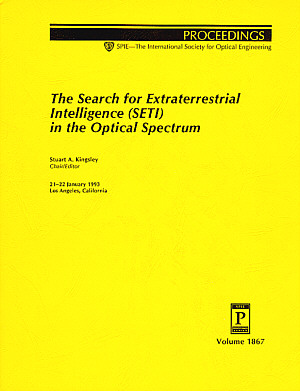 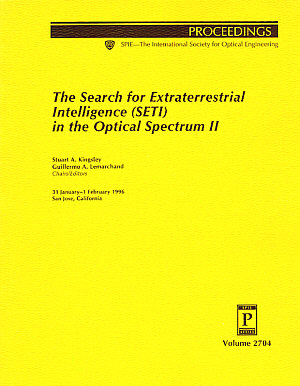
Vindication
Back in September 1998, when the news first publicly broke that the SETI Institute and
The Planetary Society would now be supporting several Optical SETI research activities,
Larry Klaes, the Coordinator for this Web site and The SETI League, assumed that I would
feel the joy of "vindication". In fact, my response was very subdued at
the time. I have recently been asked that same question by Kelly Beatty, the senior
editor for Sky & Telescope. On consideration and some thought, I think the
reasons for my muted response were the following.
I have basically felt for about a quarter of a century that if Electromagnetic SETI is
taken to be a sensible scientific activity, then the optical approach to SETI would have
significant advantages (for most of that time I had been unaware that it had been proposed
and observational work actually done). So sure have I been in that belief in Optical
SETI, that I was prepared to put my "money where my mouth was" and make a major
financial commitment on my part to promote the optical approach to SETI over the past
eight and a half years. Also, since years ago I had predicted that by 2001 there would be significant Optical SETI research undertaken
by major SETI researchers, it comes as no surprise that the first moves in this direction
should come towards the end of this decade. There had been hints of this for some
time as I observed a softening of attitudes (reported elsewhere on this site). Thus,
the news really came as an "anticlimax" to these years of effort. My
reaction is basically "So guys, what took you so long to see the light?".
I had a greater sense of vindication in the late 70's after British Industry and the
Americans discovered that optical fibers conveying coherent light
could be used for a variety of highly sensitivity sensing systems. During the
mid-70's, I felt that I had been banging my head against a brick wall. It may have
been deja vu, but the second time is never as good as the first!
Of course, one can only be truly "vindicated" if someone detects a laser
beacon from an ETI source. Since, as explained above, my personal beliefs in the
future of mankind would have us whizzing around the galaxy in spacecraft that could move
at effective speeds faster than light, Optical SETI for me has always been a kind
of "hedging one's bets". I would have very mixed feelings about the first
confirmed detection of an ETI signal, be it microwave or laser, since it might well imply
that mankind would be for ever locked into the confines of the Sun.
Twenty Five Years of Neglect
In the future, when popular books about SETI (on planet Earth) are written, many
authors will express puzzlement at to why there was this 25 year hiatus in Optical SETI
here in the United States. It is my view that the blame for this rests with, what is
often referred to as "The SETI Bible" -- otherwise known as the Project Cyclops Report. This report had a substantial effect
on the development of SETI, particularly in America. And it is American SETI that
has dominated this activity on planet Earth. Of course, the really interesting
question to ask is why the views of Professor Charles Townes,
one of the originators of the optical approach to SETI idea, were not accepted by the
main-stream SETI community? Why was it that Dr. Barney Oliver, principal author of
The Cyclops Report, who for a long time was known as the "Official voice of NASA
SETI", got the better of the argument? You will note that I put "on planet
Earth" in parentheses. This is to stress that I think what happened here is an
anomaly and probably most intelligent species go for the optical approach to SETI as soon
as they decide that Electromagnetic SETI is a sensible scientific pursuit.
Townes versus Oliver
Update
Conclusions
Other Related Materials:
Dr. Stuart A. Kingsley
First Posted: January 31, 1999
Revised: February 1, 2000
Version 1.04 |
![]()